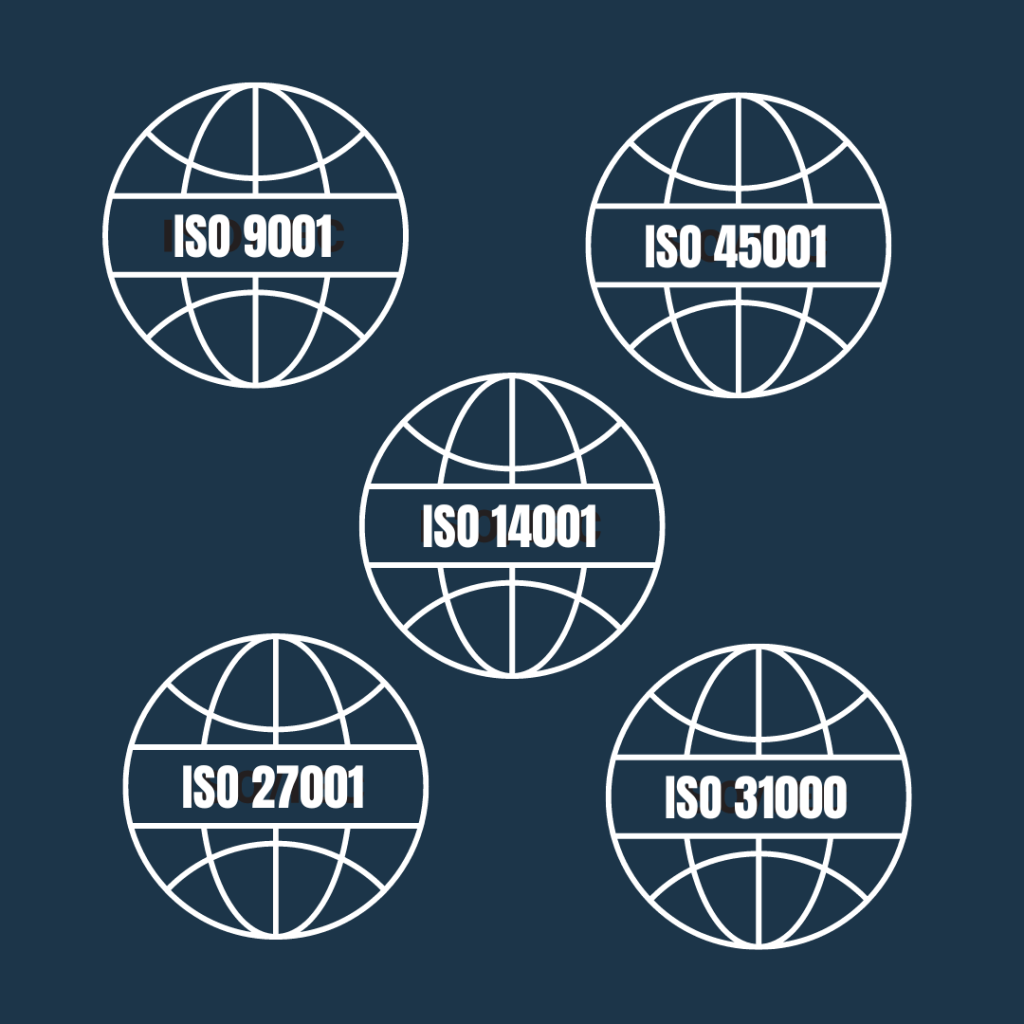ISO Compliance Services
From Gap Analysis through to Certification
Where it is essential to demonstrate that your business has structures, systems and processes to meet expectations, having an ISO-compliant or certified management system will raise your profile against that of your competitors.

What is ISO Compliance?
Having a management system that meets the requirements of ISO standards can provide your organisation with a competitive edge when you’re trying to win work.
An ISO-compliant management system gives your customers the confidence that you have a framework for reliably meeting their needs and expectations.
If you aim to win work in the government or Tier 1 private sector, your target customers will often require that you either:
- Have an ISO certified management system; or
- Can demonstrate a management system that is consistent with the requirements of ISO standards (either in full or in part).
Being ISO-certified commits your organisation to specific requirements of the standard, which will need to be implemented across all relevant levels and functions specified within the scope of your management system.
Whether or not you choose to have your management system externally audited for ISO certification, having confidence that it meets ISO requirements will go a long way to demonstrating your capacity to meet customer requirements.
Additionally, it provides a robust framework for how to achieve the objectives of your organisation.
The Steps to ISO Certification
- Obtain the standard, and train your team: You’ll need to identify and train the people within your business who will lead the development of your management system.
- Assess the gaps: ISO standards have mandatory elements and processes that need to have been developed and implemented in order to achieve certification. A gap analysis will guide your efforts.
- Develop and implement the requirements: The pathway to certification involves developing your management system processes in accordance with ISO requirements, and effectively implementing them within the business.
- Certification Audits: Your Certification Body conducts audits of your business to determine your compliance with the standard, and upon completion of a successful Stage 2 (Certification) audit, the business is now certified!
- Maintain your management system: Upon successful completion of your Certification audit, you will be subject to periodical surveillance audits (generally annually) to ensure that your management system remains compliant with the standard.
We will work through each of these stages with you, and can provide on-site support during your certification audits.
ISO Standards that we'll assist you with
ISO 9001 – Quality Management: The most popular ISO management system standard, aimed at ensuring provision of products and services that meet customer and regulatory requirements.
ISO 45001 – Occupational Health and Safety Management: This standard is aimed at the reduction of occupational injuries and diseases, including promoting and protecting physical and mental health.
ISO 14001 – Environmental Management: Sets out the requirements for an environmental management system, guiding organisations to improve their environmental performance through more efficient use of resources and reduction of waste, gaining a competitive advantage and the trust of stakeholders.
ISO/IEC 27001 – Information Security Management: A framework of standards for how a modern organisation manages its information and data security risks.
ISO 37301 – Compliance Management: Previously ISO 19600, this standard provides guidelines for effective compliance management systems. Based on the principles of good governance, proportionality, transparency and sustainability, it describes the key components and processes of an effective Compliance Management System.
ISO 31000 – Risk Management: Provides principles, a framework and a process guidance for managing risk. It can be used by any organisation regardless of its size, activity or sector. Though organisations are not formally certified to ISO 31000, this standard can guide risk management frameworks developed under other ISO standards (e.g. ISO 45001, ISO 14001).
- This standard is supported by IEC 31010 (Risk management — Risk assessment techniques), that guides organisational stakeholders in the selection of relevant and suitable risk management techniques.
ISO 22301 – Business Continuity: Assists organisations to develop business continuity plans to identify potential threats to the business, build capacity to deal with unforeseen events, and to assist in the recovery from disruptive incidents when they happen.

HSEQ Management Services
Are your operational and risk management systems effective in helping you to win new work, maintain work standards and prevent adverse outcomes?

ISO Compliance & Certification
Are you moving towards ISO certification? We can guide your preparation, right through to supporting your certification audit.

Lucidity HSEQ Information Management
DBell Consulting provides solutions tailored to your organisation and sets you up for ongoing success with Lucidity Health & Safety software.

Information Security Management Systems
Do you need confidence that your systems, policies and controls are effectively protecting the confidentiality, integrity and availability of your information assets?

On demand HSEQ Specialist
Need occasional support of an experienced HSEQ Manager? Call us to discuss a tailored approach to your needs – as much or as little as required.

Audit Services
Are you confident that your business is compliant with legislation, industry standards, or even your own policies? An independent compliance audit can provide you with that assurance.

Bid & Project Support
We’ll help to clarify tender and project requirements, develop project HSE & QA Plans, Document Control, Sub-contractor due diligence and project compliance audits.

Investigations & Injury Management
When incidents and injuries do occur, the quality of a post-incident investigation, and the manner in which you support an injured worker will determine the human cost and operational disruption.
